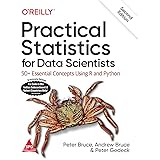Intro to Tensorflow-Machine Learning with TensorFlow
Introduction to machine learning with TensorFlow!
Intro to Tensorflow
The Google Brain team created TensorFlow, an open-source library. It was designed for activities that need a lot of numerical computations.
TensorFlow was designed specifically for machine learning and deep learning networks. TensorFlow ran faster than python code thanks to the use of C/C++ as a backend.
A data flow graph is a standard programming model for parallel processing that is used by tensor flow applications.
What does a data flow graph imply?
Two computational units are present in data flow graphs.
That’s what nodes and edges are.
The mathematical operations are represented by nodes. Multidimensional arrays are indicated by edges (Tensors)
eXtreme Gradient Boosting in R » Ultimate Guide »

Advantageous
1) Tensorflow provides python and C++ APIs (Python API is easier to use)
2) Great compilation time in comparison to the alternative deep learning libraries.
3) Support CPUs, GPUs, and distributed processing.
Cluster Analysis in R » Unsupervised Approach »
What is mean by tensor?
Tensors are the types of data that are exchanged between operations. It’s a multidimensional array, which means it may hold scalar values, vector values, a two-dimensional matrix, and so on.
Let’s look at an image as an example. The dimensions of an image are its height, breadth, and colors. In this scenario, the multidimensional array is well suited to storing the bits of data.
What makes TensorFlow popular?
The architecture’s flexibility is the straightforward answer. This enables us to run a computation on one or more CPUs, GPUs, or a desktop, server, or another computing device.
It means that once you’ve created your application, you may quickly run it on a variety of devices.
Naive Bayes Classification in R » Prediction Model »
Why is TensorFlow suited for deep learning?
The main reasons are;
1) Extensive built-in support for deep learning and neural networks.
2) Mathematical functions- It also has a collection of simple, trainable mathematical functions that are useful for neural networks.
3) TensorFlow auto differentiation and optimizers will help deep learning, which is a gradient-based machine learning technique.
We’ll go through deep learning, different network types, and their applications in greater detail in the upcoming post.
You can read the next post from here






